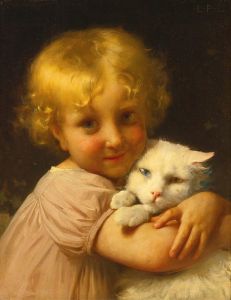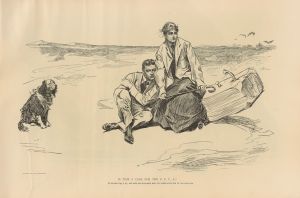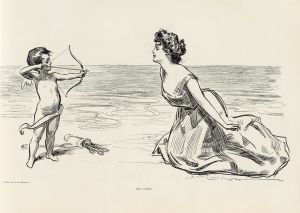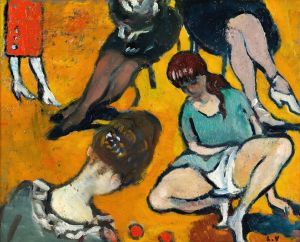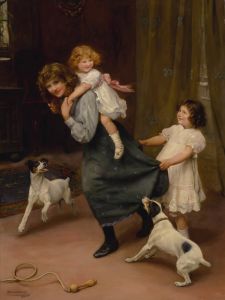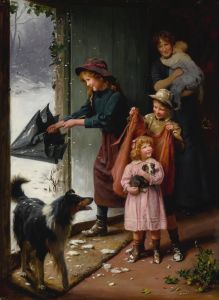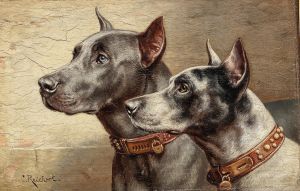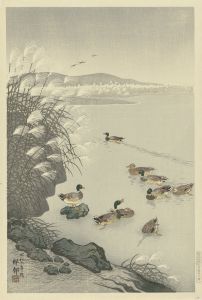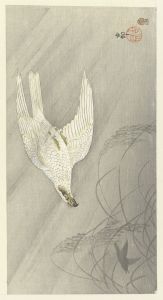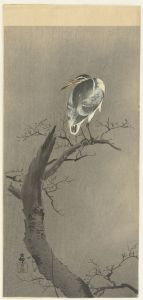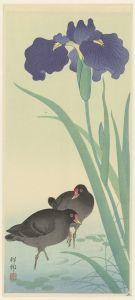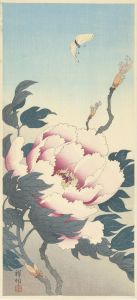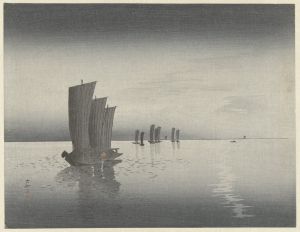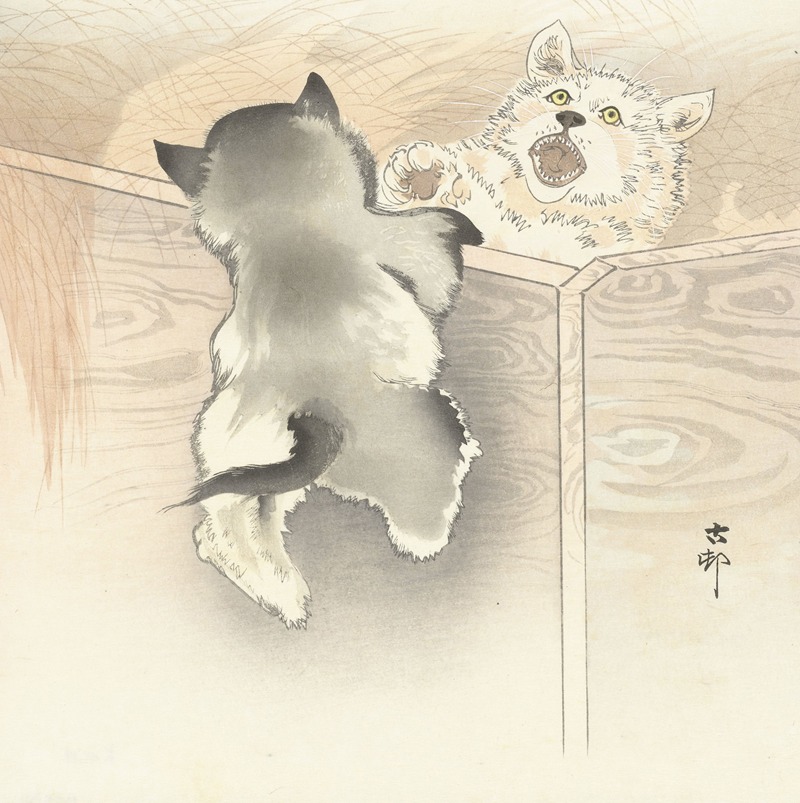
Two playing dogs
A hand-painted replica of Ohara Koson’s masterpiece Two playing dogs, meticulously crafted by professional artists to capture the true essence of the original. Each piece is created with museum-quality canvas and rare mineral pigments, carefully painted by experienced artists with delicate brushstrokes and rich, layered colors to perfectly recreate the texture of the original artwork. Unlike machine-printed reproductions, this hand-painted version brings the painting to life, infused with the artist’s emotions and skill in every stroke. Whether for personal collection or home decoration, it instantly elevates the artistic atmosphere of any space.
Ohara Koson, a renowned Japanese artist, is celebrated for his exquisite woodblock prints, particularly those depicting birds and flowers, a genre known as kachō-ga. Among his diverse body of work is the piece titled "Two Playing Dogs." This artwork exemplifies Koson's ability to capture the essence of animals with elegance and precision, a skill that has earned him a prominent place in the shin-hanga movement.
Born in 1877 in Kanazawa, Ishikawa Prefecture, Koson was initially trained in painting under Suzuki Kason, a master of the Shijō school. His early career was marked by a focus on traditional Japanese painting, but he later transitioned to woodblock printing, a medium that allowed him to reach a broader audience. Koson's work gained international recognition, particularly in the United States and Europe, where there was a growing fascination with Japanese art in the early 20th century.
"Two Playing Dogs" is a testament to Koson's mastery of the woodblock print medium. The artwork features two dogs engaged in playful interaction, a subject that, while less common than his bird and flower prints, showcases his versatility and keen observation of animal behavior. The composition is characterized by its dynamic movement and the lively expressions of the dogs, which Koson captures with a few deft lines and subtle color gradations.
Koson's prints are known for their delicate balance of color, form, and composition. In "Two Playing Dogs," he employs a limited color palette, which enhances the simplicity and elegance of the scene. The background is typically understated, allowing the viewer's focus to remain on the interaction between the two animals. This approach is consistent with the aesthetic principles of shin-hanga, which sought to blend traditional Japanese art techniques with Western influences, emphasizing realism and emotional expression.
The shin-hanga movement, active from the early 20th century until the 1950s, was a response to the decline of traditional ukiyo-e prints. It aimed to revitalize the art form by incorporating modern themes and techniques while maintaining the collaborative process between artist, carver, printer, and publisher. Koson was a prominent figure in this movement, and his works were widely published by Watanabe Shōzaburō, a leading publisher of shin-hanga prints.
Koson's animal prints, including "Two Playing Dogs," are highly regarded for their technical excellence and artistic beauty. They reflect his deep appreciation for nature and his ability to convey the personality and vitality of his subjects. Today, his works are held in numerous museum collections worldwide, including the Museum of Fine Arts in Boston and the Rijksmuseum in Amsterdam, where they continue to be admired for their contribution to the legacy of Japanese woodblock printing.
In summary, "Two Playing Dogs" by Ohara Koson is a fine example of the artist's skill in capturing the playful essence of animals through the medium of woodblock printing. It highlights his role in the shin-hanga movement and his enduring influence on the appreciation of Japanese art in the global context.





